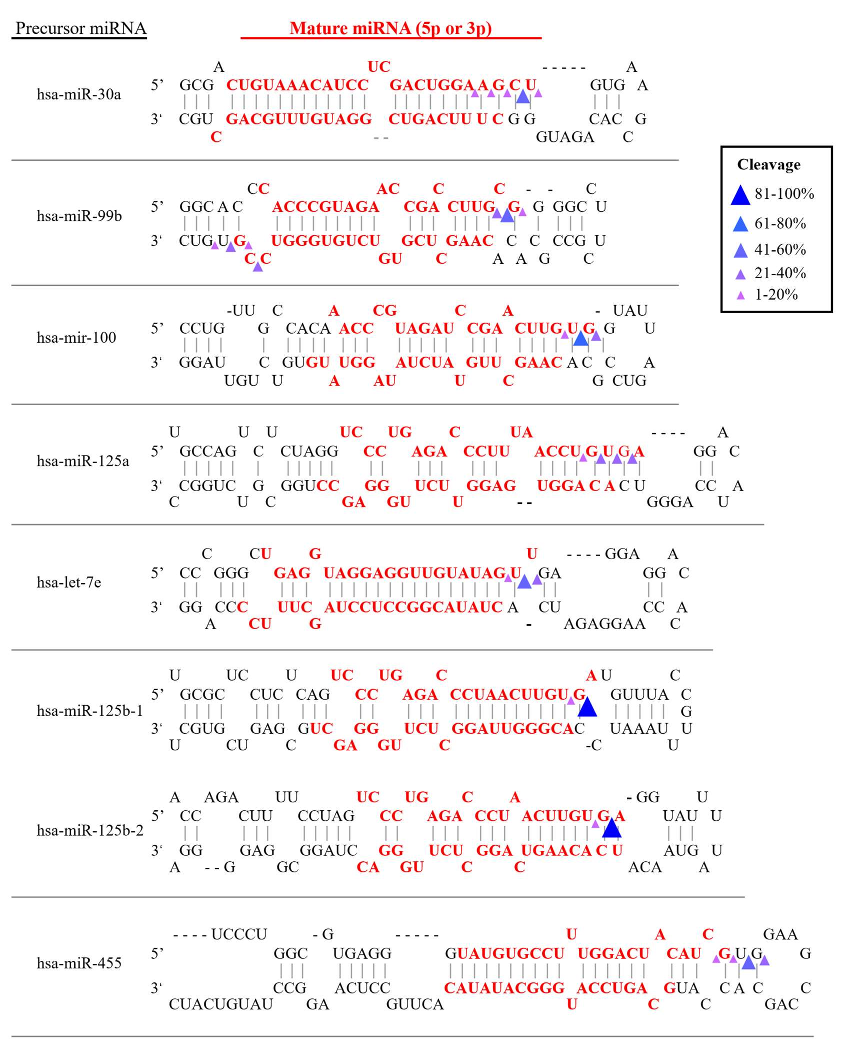




Did you find this useful? Give us your feedback













47,038 citations
20,335 citations
15,744 citations
4,629 citations
2,266 citations
Further work is mandatory for an unambiguous pattern assignment towards the understanding of how RNase2 can shape the ncRNA population and its role to fight viral infection.
Among the blood cell types, RNase2 is particularly abundant in monocytes [11], which are key contributors to host defence against pathogens.
RNase2 was proposed to have a role in the host response against the single stranded RNA virus [22] and early studies observed that RNase2 can directly target the RSV virion [12].
Accumulation of miRNAs can be toxic to the cells, due to their potential interference with the translation of essential proteins.
Particular interest should be drawn to the new identified tRNA fragments associated to RNase2 and absent from the commercial library array, which represent potential new regulatory elements for future studies.
Increasing data demonstrates that small noncoding RNAs (ncRNAs) play important roles in regulating antiviral innate immune responses [34–36].
RSV infection activated the expression of RNase2 inmacrophagesRSV virus stock was obtained at a titration of 2.8×106 TCID50/mL, as previouslydescribed [25] and THP1 macrophages were exposed to the RSV at a selected MOI of 1:1 up to 72h post of infection (poi).
In their previous work using a macrophage infection model, the authors observed thatRNase2 is the most abundantly expressed RNaseA superfamily member in the monocytic THP1 cell line [24].
under certain cell conditions, such as nutrition deficiency oroxidative stress, RNase5/Ang is reported to stimulate the formation of cytoplasmic stress granules and produce tRNA-derived stress-induced RNAs (tiRNAs) [69–71].
the most significant tRNA fragments associated to RNase2 presence showed a U/C cleavage target for B1 at the anticodon loop (Table S4).
Previous work indicated that RNase2 is the most abundant RNaseA family member expressed in this human monocytic cell line [24] (https://www.proteinatlas.org/).
More importantly, the array screening technique is prone to be biased by theselection criteria used to build the tiRNA&tRF array; a library composed on previously available experimental data, i.e. products by RNases such as Dicer, Angiogenin, RNaseP or RNaseZ.
Using the nrStarTM Human tRF&tiRNA library, the authors found that out of a total of185 tRNA fragments, only 5 were significantly decreased in RNase2 KO macrophage in comparison to the WT control group in uninfected samples and 22 under RSV infection: 6 tiRNAs, 4 itRFs, 9 tRF-5, 4 tRF-3, 1 tRF-1 (see Table 1).
to determine whether the induction of RNase2 mRNA levels correlated with an increase in protein expression, ELISA and WB were conducted to detect intracellular and secreted RNase2 protein of THP1-derived macrophages.